Discover 7 hidden attractions, cool sights, and unusual things to do in Marshalltown (United States). Don't miss out on these must-see attractions: Marshall County Courthouse, Glick–Sower House, and C.H. Whitehead House. Also, be sure to include Leroy R. Willard House in your itinerary.
Below, you can find the list of the most amazing places you should visit in Marshalltown (Iowa).
Table of Contents
Marshall County Courthouse
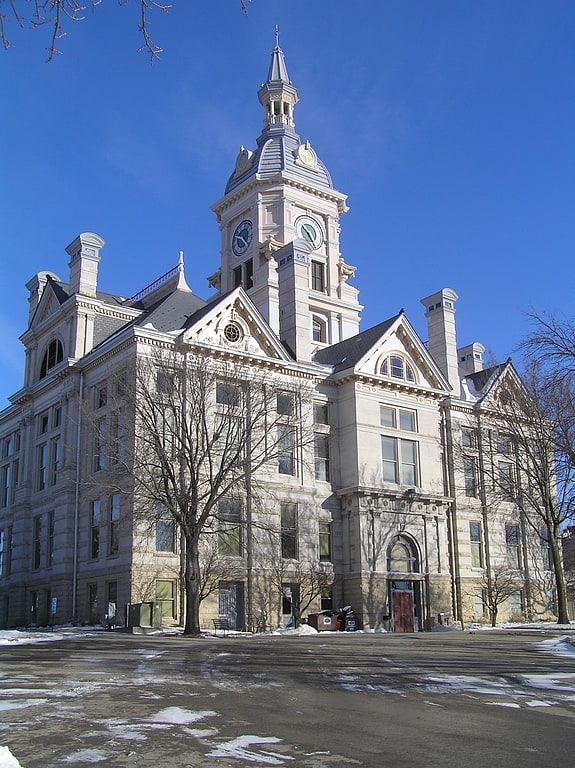
Building. The Marshall County Courthouse is located in Marshalltown, Iowa, United States. The current building was completed in 1886 to replace an earlier building. The courthouse is a dominant landmark in downtown Marshalltown. It was individually listed on the National Register of Historic Places in 1972. In 2002 it was listed as a contributing property in the Marshalltown Downtown Historic District. It is the third building the county has used for a courthouse and county business.[1]
Address: 202 E Church St, 50158-2943 Marshalltown
Glick–Sower House
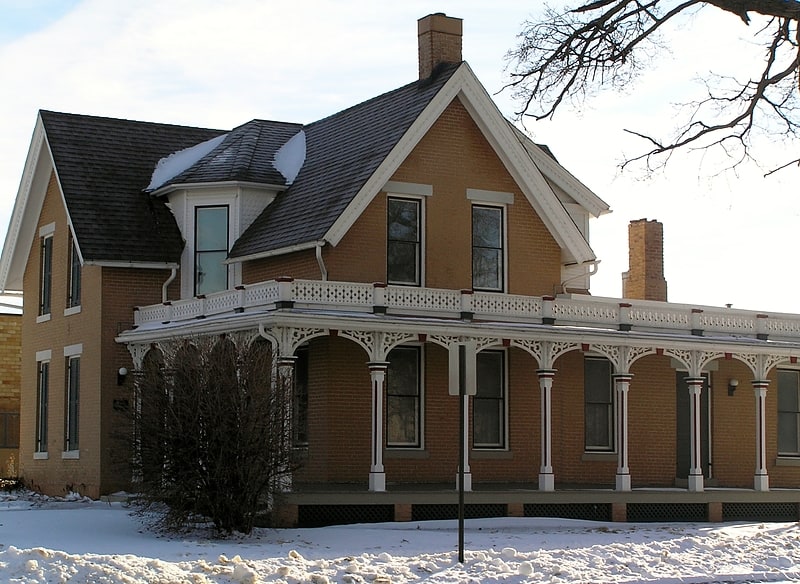
Museum in Marshalltown, Iowa. The Glick–Sower House, also known as the Susie Sower House, is located in Marshalltown, Iowa. The house was built in 1859 for Dr. George Glick and has been listed on the National Register of Historic Places since 1993. It is operated as a historic house museum by the Historical Society of Marshall County.[2]
C.H. Whitehead House

The C.H. Whitehead House is a historic residence located in Marshalltown, Iowa, United States. Whitehead was a Boone County, Iowa native who came to Marshalltown in 1898, where he established a women's and children's clothing store that is thought to be the first of its kind in Iowa. He had this home built around the turn of the 20th century. The house does not exemplify any one style, but is a compilation of several styles. The Queen Anne style is found in overall asymmetry of the main facade, especially the projecting bay and the porch's pediment, as both are off-centered. The Georgian Revival style is found in the rectangular form of the structure, the horizontal proportions, and the Adamesque details. The 17th century colonial architecture of New England is found in the way the second floor overhangs the first floor on the side elevations. The house was listed on the National Register of Historic Places in 1979.[3]
Leroy R. Willard House
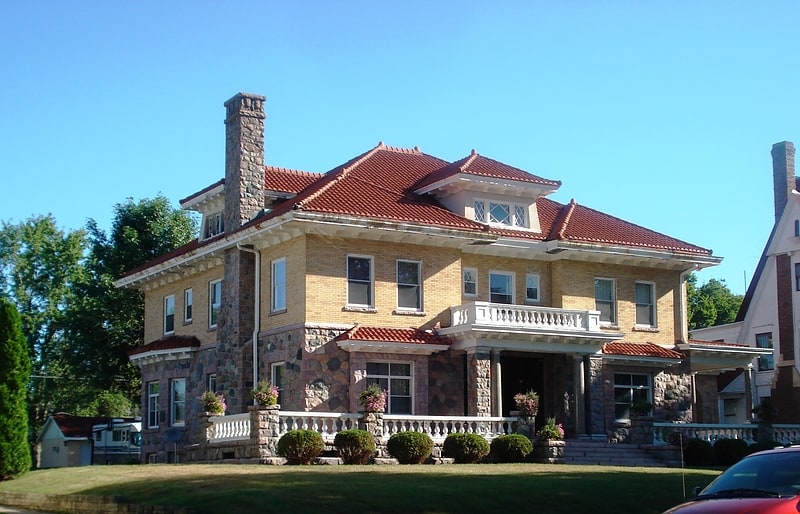
The Leroy R. Willard House, also known as Willard Mansion, is located in Marshalltown, Iowa. The house was built in 1910 for Leroy R Willard and has been listed on the National Register of Historic Places since 1976.[4]
Robert H. Sunday House
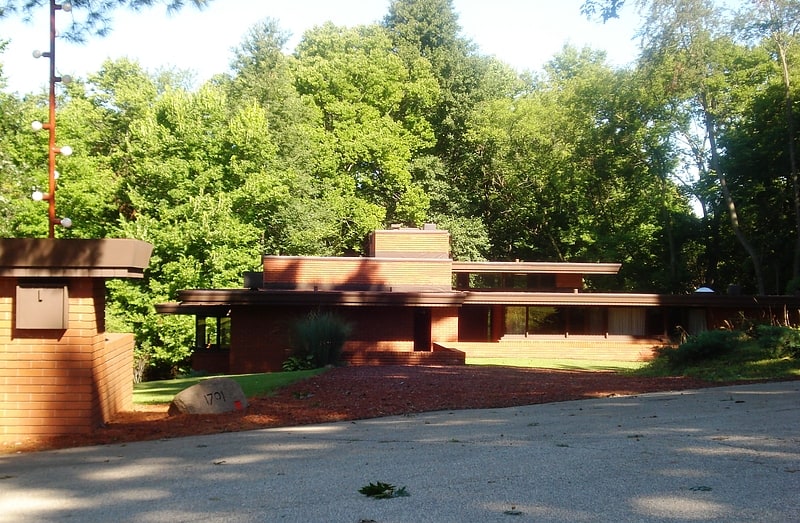
The Robert H. Sunday House is located in Marshalltown, Iowa, United States. It was designed by Frank Lloyd Wright in the Usonian style, and was listed on the National Register of Historic Places in 1988. Initially the Sunday's choose the Usonian Automatic, a natural concrete block model, for their home. When it provided unworkable, Wright sent the plans for this house. In style and materials it is very similar to the 1953 Usonian Exhibition House. It was the sixth of seven houses designed by Wright and built in this style in Iowa. Sunday, who owned Marshall Lumber in Marshalltown, acted as his own general contractor. In fact, he and his wife did much of the work themselves. It is also believed to be last of this style built in brick. John H. "Jack" Howe, a Wright assistant who supervised the initial construction, designed an addition to this house in 1970 that conforms seamlessly with the original. It includes the family room, family room terrace, and the dining room. The original house followed an "L" shaped plan, and with the addition it is now a "T" shaped plan. Howe had previously designed the building for Sunday's business.[5]
Marshalltown Downtown Historic District

Historical place in Marshalltown, Iowa. The Marshalltown Downtown Historic District is a historic district located in Marshalltown, Iowa, United States. It was listed on the National Register of Historic Places in 2002. At the time of its nomination it contained 96 resources, which included 79 contributing buildings, one contributing site, and 16 non-contributing buildings. The historic district covers most of the city's central business district. All of it is within the original town of Marshalltown, which was laid out and recorded on August 15, 1853, as the village of Marshall. Confusion with a town with the same name in Henry County led this village to be renamed Marshalltown in 1862. It was incorporated the following year.
The district contains a mix of commercial buildings, an opera house, a movie theater, a fraternal hall, and warehouses. The civic buildings include the Marshall County Courthouse, sheriff's residence, municipal building, civic auditorium and public library. The buildings range in size from narrow, two-story commercial blocks to three-story corner blocks, and the seven-story Hotel Tallcorn. The period of significance is from 1862 to 1950, and the buildings are constructed during that time frame. The commercial Italianate, Romanesque Revival, and especially vernacular architecture are dominant. Prominent architects who have buildings in the district include John C. Cochrane (courthouse; 1886), Patton and Miller (public library; 1902), Harry E. Reimer (Marshalltown Municipal Building; 1921), and Josselyn and Todd (Marshalltown Memorial Coliseum; 1929).
A tornado struck Marshalltown on July 19, 2018. It did significant damage to many buildings in the historic district, including the courthouse, city hall, and the civic auditorium.[6]
Thaddeus Binford House
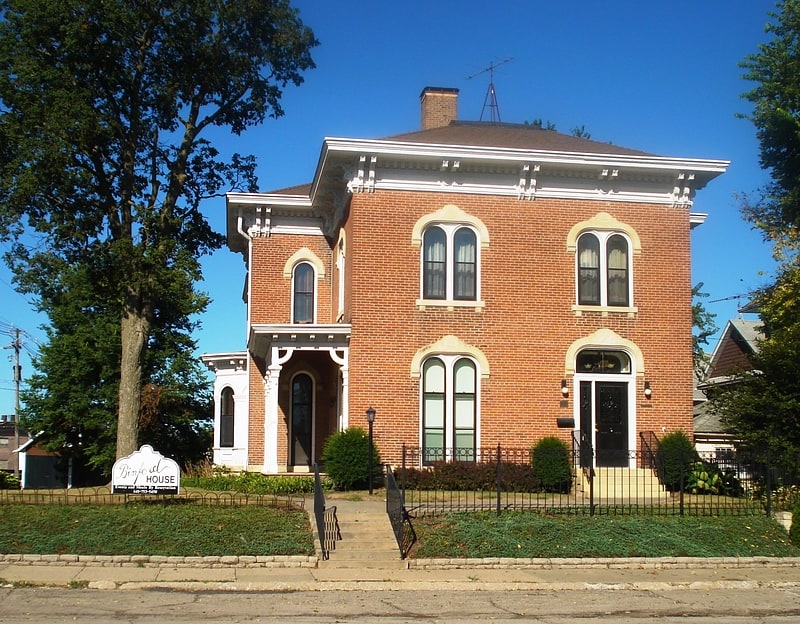
The Thaddeus Binford House is located in Marshalltown, Iowa. The house was built in 1874 for Thaddeus Binford, a wealthy Quaker attorney, and has been listed on the National Register of Historic Places since 1984.[7]